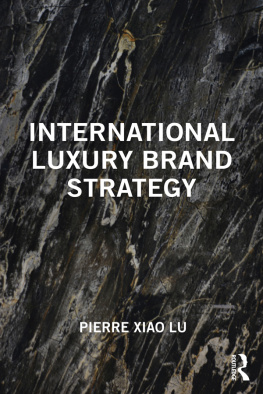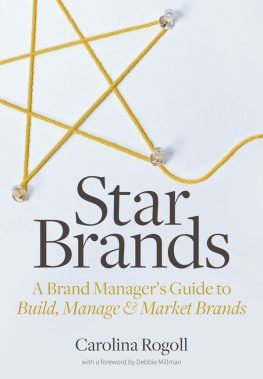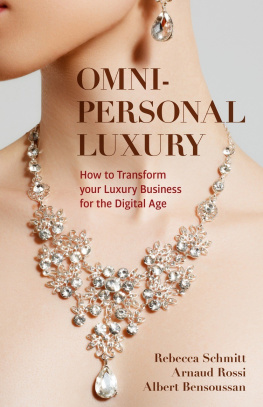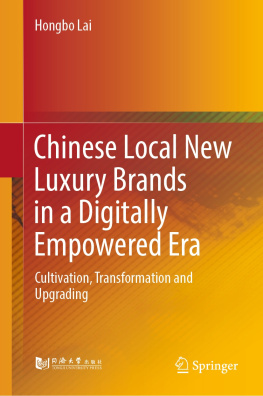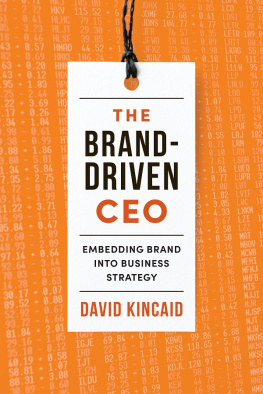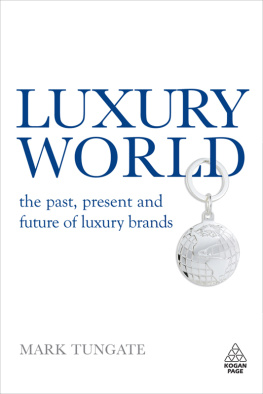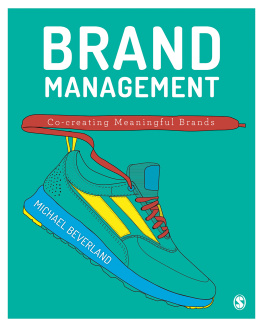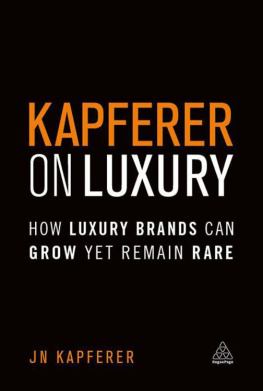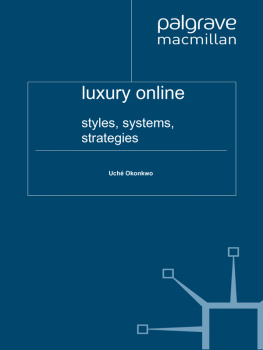This book looks at luxury brand management and strategy from theory to practice and presents new theoretical models and solutions for how to create and develop a worldwide luxury brand in the twenty-first century.
The book gives an overview of how a luxury brand is created through the understanding and application of economic rules and through firms adopting new management models across multiple business dimensions. It also explains the application of theories and models and illustrates specific issues through case studies drawn from international markets such as China and France. The Chinese cases provide unique opportunities and insights into how these new luxury brands were created and how they have benefited from the international market over time.
From the international brand management perspective, this book is a useful reference for anyone who wants to learn more about luxury brand management and to better understand how the international market has evolved and how products may change the rules of the game.
Chinese luxury brands are just emerging but likely to grow much more in the future and carry their own vision of what is luxury. This new book by Professor Pierre Xiao Lu takes part in this movement as it analyzes in detail the current practices of major Chinese brands pursuing a trading up objective.
Pierre Xiao Lu is one of the most astute and experienced luxury brand strategists in the world, with an especially keen eye for luxury brand developments in China and Asia as a whole. International Luxury Brand Strategy reflects his many years of careful research and impactful consulting with leading luxury brands around the world. An essential read he delves into eight key aspects of international luxury brand strategy and makes a convincing case of how luxury brands fundamentally need to be managed differently from other kinds of brands.
International Luxury Brand Strategy
Pierre Xiao Lu

First published 2022
by Routledge
2 Park Square, Milton Park, Abingdon, Oxon OX14 4RN
and by Routledge
605 Third Avenue, New York, NY 10158
Routledge is an imprint of the Taylor & Francis Group, an informa business
2022 Pierre Xiao Lu
The right of Pierre Xiao Lu to be identified as author of this work has been asserted in accordance with sections 77 and 78 of the Copyright, Designs and Patents Act 1988.
All rights reserved. No part of this book may be reprinted or reproduced or utilised in any form or by any electronic, mechanical, or other means, now known or hereafter invented, including photocopying and recording, or in any information storage or retrieval system, without permission in writing from the publishers.
Trademark notice: Product or corporate names may be trademarks or registered trademarks, and are used only for identification and explanation without intent to infringe.
British Library Cataloguing-in-Publication Data
A catalogue record for this book is available from the British Library
Library of Congress Cataloging-in-Publication Data
Names: Lu, Pierre Xiao, author.
Title: International luxury brand strategy / by Pierre Xiao Lu.
Description: First Edition. | New York : Routledge, 2019. | Includes bibliographical references and index.
Identifiers: LCCN 2018056678
Subjects: LCSH: Luxury goods industryManagement. | Brand name productsManagement. | LuxuriesMarketing. | Export marketing. | Communication in marketing.
Classification: LCC HD9999.L852 L8 2019 | DDC 658.8/27dc23
LC record available at https://lccn.loc.gov/2018056678
ISBN: 9781138614833 (hbk)
ISBN: 9781138614840 (pbk)
ISBN: 9780429463884 (ebk)
DOI: 10.4324/9780429463884
Typeset in Bembo
by Apex CoVantage, LLC
To my wife Qianqian and my daughter Guangping
Contents
Tian Tao
Andrew Wu
Weiming Cao
Guide
Figures
Tables
Foreword: brands are time-honored gifts
If lower prices were equal to more market shares, Alto would blow Audi away. This classic epigram underlines the value of brands. Alto and Audi, though their names sound similar, have never been in the same class. By nature, they are structural combinations of iron, steel, rubber and other features, and are capable of operating in a fast and steady manner. However, we have to admit that an Audi car can more effectively represent the personality, social status, taste and success of its owner.
Mega brands, for example, Audi, embrace the extremes of value. It is invisible, untouchable and even incomprehensible, but customers cannot resist the temptation they approach it, adore it, and even become a part of it. Inevitably, for a moment in life, during a period in life or throughout the whole of life, millions of people, rich or poor, noble or humble, will more or less be attracted by a brand and become obsessed with it. Why and how does this happen? International Luxury Brand Strategy, a culturally important book written by Prof. Dr. Pierre Xiao Lu, has uncovered the secrets.
The history of branding is the depiction of humanity. It is such humanity, or more precisely, the competence of thinking, that differentiates human beings from other creatures on this planet. For example, flowers are merely the combination of molecules at the level of material. However, they are incredible structures and can generate and release realistic emotions. This may be the best explanation for the origin of the magic and charisma contained in first-class and time-honored brands. Different from tangible elements, the intangible parts are more like beautiful and colorful bubbles that make your heart beat faster, get your adrenalin flowing, and give you the urge for possession, obsession and submission. And this is my very first perception of Pierre Xiao Lus book.
The history of branding is the revelation of a creators spirit. Without the passion for quality products, premium goods and the best materials, creators would not tolerate the loneliness of perfecting skills for years, show such perseverance in making improvements for decades or pursue excellence in craftsmanship for centuries. With passion, resolution and dedication, they grow stronger day by day, and finally, they get there. The household names worldwide are established and built up in similar ways. Behind the rise and glory of international brands, there is hard work, bitter suffering, pain and, finally, gain after surviving hardships. Pierre Xiao Lus book fills me with a sense of awe for the beauty of brands and draws me into deeper thought: after you have established a brand, do you have an emotional connection with it? And in the days, weeks, months and years after that, have you ever considered the possibility of making it better or tried different new ways to make it grow bigger and stronger?

